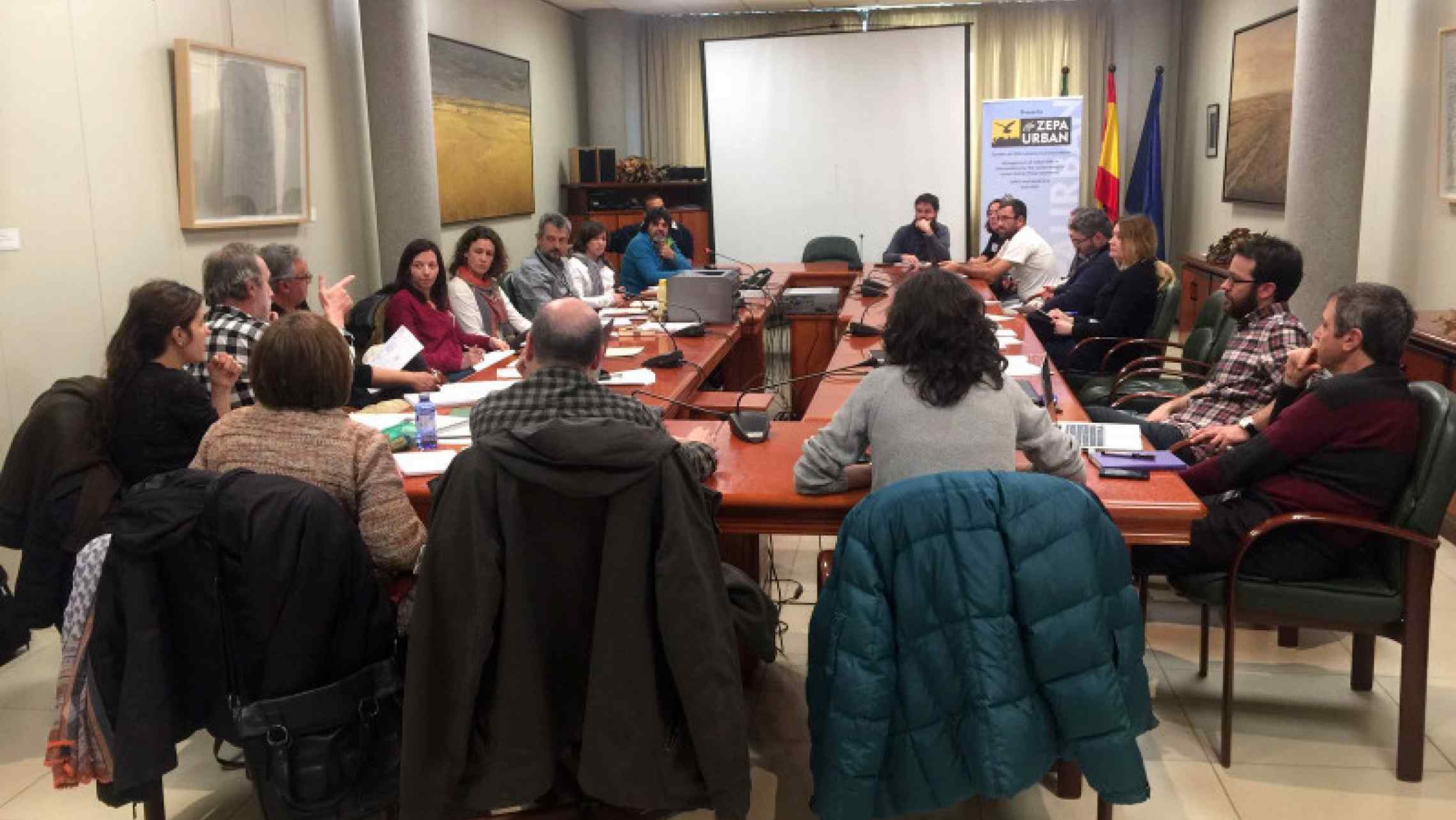To coincide with the arrival of the first lesser kestrels from wintering in Africa, a few days ago we were in Mérida to talk about something that interests us greatly and on which we have been working for years: the conservation of this small migratory falcon in urban areas. On 15th February we attended the first meeting of the Scientific Committee of LIFE-ZEPAURBAN, a project supported by the European Union with the main objective of developing a management model for urban Special Bird Protection Areas (Zonas de Especial Protección para las Aves, ZEPAs) in Extremadura to ensure the long-term conservation of the lesser kestrel that is applicable to any urban area housing colonies of the species.
The LIFE-ZEPAURBAN project was initiated in September 2016 and will last four years; it has a budget of over 2.5 million euros and is coordinated by the Regional Government of Extremadura together with various bodies, companies, and associations. At this first meeting in Mérida the suitable methodological criteria for the development of the preliminary actions of the project that will begin this year were discussed, such as fitting birds with GPS technology or the census of colonies.
The Group for Restoring Indigenous Fauna and its Habitat (Grupo de Rehabilitación de la Fauna Autóctona y su hábitat, GREFA) is involved with the urban population of the lesser kestrel in Extremadura in the actions we have carried out in the towns declared as ZEPAs for the species, such as Trujillo, Guareña, and Fuente de Cantos, and those planned for Plasencia, Cáceres, and Llerena, among others. One of the strong points of our work has been the placing of nest boxes on agricultural silos so as to create and consolidate lesser kestrel breeding colonies.
On the way back from Mérida we stopped at Trujillo where we were able to confirm that the lesser kestrels that nest on the silos there have arrived ready to start the breeding season. We counted some twenty individuals, most of which were males and some of which had even been ringed as chicks. We returned from Extremadura with the advent of spring with all our hopes and effort concentrated on the large-scale recovery of the lesser kestrel, a species that is causing concern to those of us who study, follow, and conserve the species in view of its recent decline.
This is crucial moment for this beautiful small bird of prey, to which we are more committed than ever to ensure that its recovery continues.
Source: GREFA - Grupo de Rehabilitación de la fauna autóctona y su hábitat


